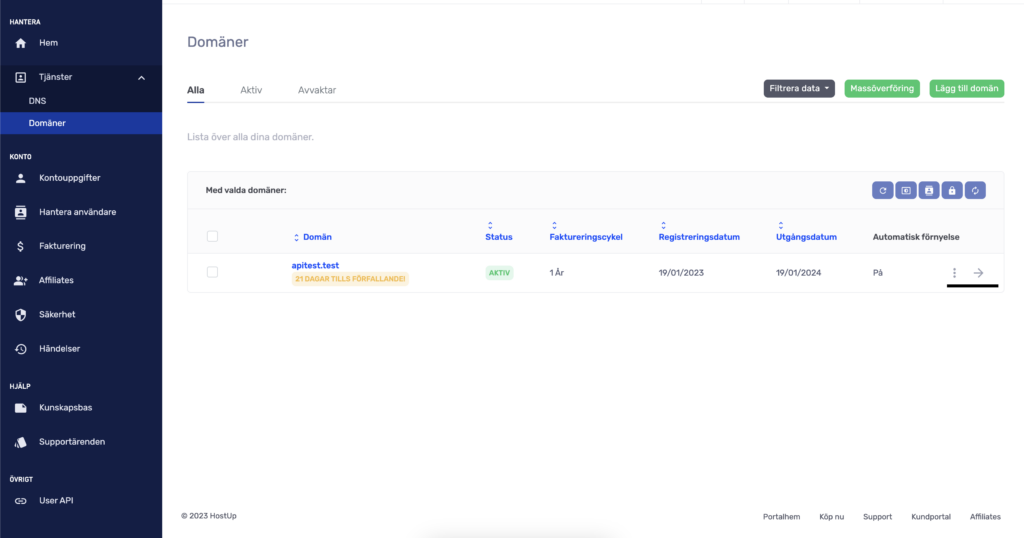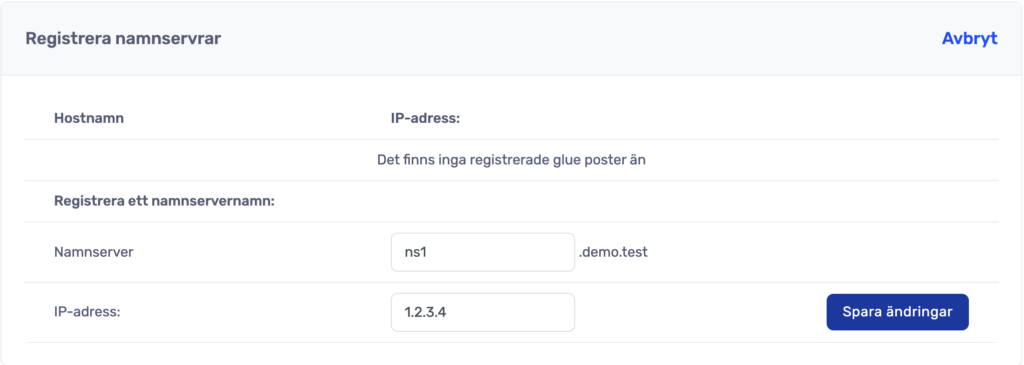Glue records are an essential component in DNS and play a crucial role when using subdomains as name servers for your primary domain. Follow this guide to manage glue records:
Understanding glue records
- Definition and Purpose: Glue records are special DNS records that provide IP addresses for name servers, especially when these name servers are part of the same domain they are intended to resolve. This is critical to prevent circular dependencies in DNS.
Identify the need for glue records
- When Are They Needed?: You need glue records if your domain, for example, ‘example.se’, is going to use subdomains like ‘ns1.example.se’ and ‘ns2.example.se’ as name servers.
- For .se/.nu domains you also need to create glue records (register nameservers) if you want to be able to use those nameservers on other .se or .nu domains.
Log in to your customer area
- Access Your Account: Visit your customer zone and log in to your account where you manage your domain.
- Navigate to the Correct Domain: Navigate to “Services > Domains” at the top left of the navigation bar and then select the correct domain.

Add glue records
- Find Glue Record Settings: Once you have selected the domain for which you want to add Glue Records, click on “Register Glue Records” on the right side.

- Enter Names and IP Addresses: For each name server, such as ‘ns1.example.se’, enter the associated IP address. The IP address should be the same as your DNS server. You need to enter at least two name servers.
- IPv4 & IPv6: If you want to register a nameserver with both IPv4 and IPv6, enter them seperated by ,

Save changes
- Confirm the Change: After adding or updating your glue records, save the changes. These changes may take some time to propagate through the DNS system.
Verify the configuration
- Use DNS Tools: Use tools like ‘dig’ or ‘nslookup’ to verify that your glue records are correctly configured and functioning as they should. It can take up to 2 hours for the zone file to update and for you to see your glue records.
Change Name Servers
- Use Subdomain as Name Server: Now that your domain has Glue records, you can update your domain’s name servers to reflect the glue records you added.
Was this article helpful?
Tack för din feedback!
 English
English
 Swedish
Swedish
